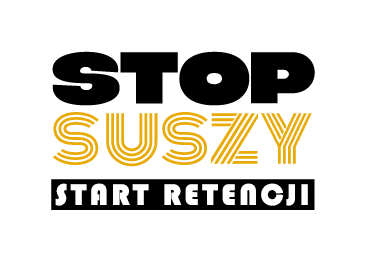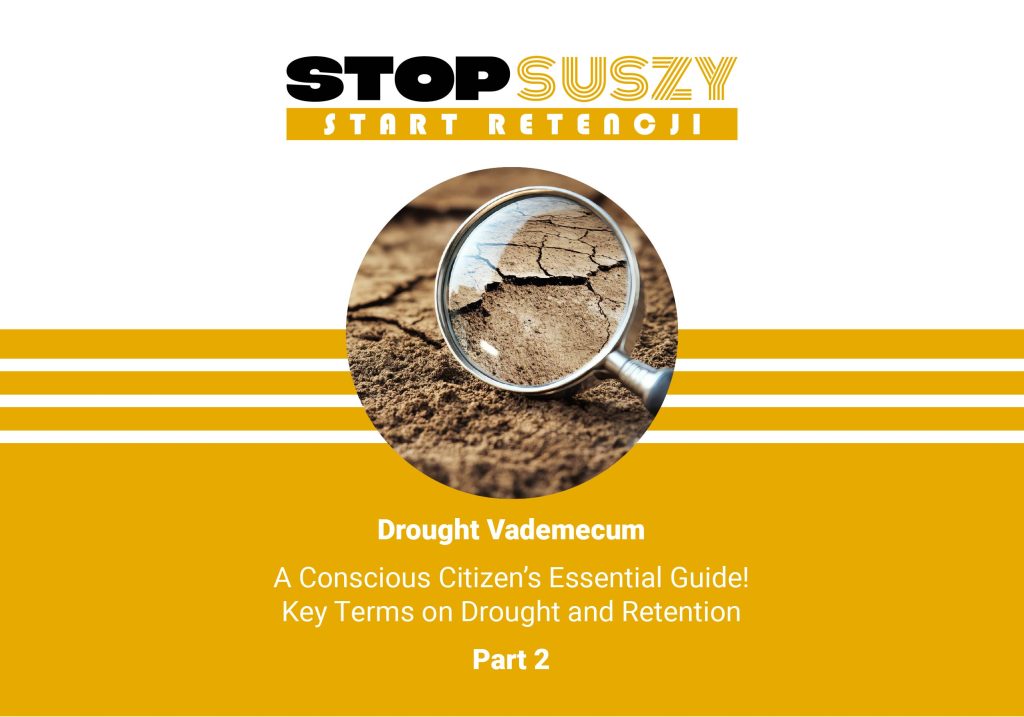September is not only the beginning of the school year, but also an ideal opportunity to reconsider the challenges facing each of us. The beginning of 2025 was very dry – many regions of Poland experienced a lack of rain, rivers and lakes reached record lows, and farmers and gardeners struggled with water shortages. Such phenomena have become increasingly frequent in recent years, and forecasts indicate that drought could be one of the greatest challenges of the 21st century.
While we saw more rain during the summer months (especially in July), it was unfortunately not enough to permanently improve the water situation in Poland. In September 2025, the Warsaw-Boulevards water gauge recorded the lowest water level in recorded history – a mere 4 cm (September 2, 2025). It’s worth clarifying, however, that these 4 centimeters do not mean that the Vistula River in Warsaw was only a few centimeters deep (in places, it was over 2 meters deep). This is the reading of a water gauge, a device measuring the river level relative to the zero gauge – a conventional reference point. This means that the water level was only 4 cm above this point. In practice, this signals a record low river level, exposing sandbanks in many places and making navigation impossible. For comparison, during floods, the Vistula River level in the same location can be as high as 600 cm.
This shows that education and conscious water management aimed at understanding what drought is and how to counteract it are a necessity today.
Glossary – Knowledge in a Nutshell
The “Stop Drought! Start Retention!” campaign is also an educational campaign. We are contributing to this education by, among other things, developing a glossary that will serve to familiarize everyone with terms relevant to the drought in Poland. This format will facilitate easy understanding of even difficult phenomena and, consequently, deepen public engagement in the fight against drought. Currently, we have prepared two stages of the glossary:
In the first, red phase of the project, we have prepared a glossary of terms related to drought risk. This is a collection of entries that explain difficult, frequently encountered terms in a simple and accessible way.
In the second, yellow phase, we are focusing on water retention and detention, the public consultation process, environmental impact assessments, and possible actions to counteract the effects of drought and water shortages. These terms will be gradually updated, divided into three groups.
The glossary includes not only a list of retention measures we can implement to help prevent the effects of drought, but also explanations of recently popular terms, such as “concrete fever” and “water footprint.”
This will make it easier to understand why local actions – such as establishing rain gardens in cities, limiting the use of concrete, or planting trees – can significantly improve the water balance in our surroundings.
Note: The glossary subpage will be gradually updated with additional terms. As the project develops, new definitions will be added, keeping you up-to-date with current knowledge about drought and ways to counteract it.
Drought in Poland: A Problem That Cannot Be Ignored
Poland is among the countries with some of the smallest water resources in Europe. Statistically, we have less water per capita than Spain or Greece, much warmer countries. For years, we have observed:
- a decline in river water levels, which are reaching normal and high levels less frequently – in summer, smaller streams dry up
- the introduction of local bans on watering gardens or filling swimming pools
- lower yields, and consequently, higher prices for vegetables and fruits
These are just some of the signals that we need to think differently about water – as a limited resource requiring protection and responsible management. That’s why daily action is so important.
Each of us can save water by:
- collecting rainwater to water plants
- reusing water – for example, water used for washing vegetables and fruit is great for watering plants
- choosing plants that require less irrigation
- choosing products with a smaller water footprint
- reducing the use of concrete in yards and opting for greenery
- reporting leaks and water system failures – every leaky faucet, leaky pipe, or flush causes unnecessary water waste
Even seemingly small changes can contribute to a significant increase in water resources if enough people take appropriate action.
Water Education – An Investment in the Future
The new school year is a time for gaining knowledge – both traditional, academic knowledge and knowledge that will help us in our daily lives. That’s why it’s so important to understand how best to care for the environment. Water education is an investment in the future. Through it, we learn to understand phenomena that directly impact our lives and how to respond wisely to challenges.
We therefore strongly encourage you to educate yourself and others on the topic of drought and water retention. With increased public awareness, we will be able to do more and go further. The sooner we take steps towards proper water resource management, the sooner the drought crisis will cease to be a death sentence, and the creative solutions we implement will bring real, tangible results.
Water education is also an excellent opportunity to shape children’s sensitivity to the world around us – teaching them respect for nature, environmental responsibility, and the importance of everyday choices in protecting natural resources.
We invite you to familiarize yourself with our glossary, which will certainly help you understand the topic of drought and how to counteract it, while also helping to foster ecological awareness and curiosity in young children. We also encourage you to print the educational boards and display them in your school.

 PL
PL

